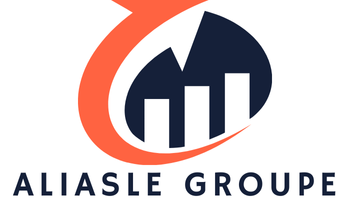Understanding Supply Chain Efficiency
Supply chain optimization is a crucial process for any business, striving to enhance its operations to ensure cost-effectiveness and reliability. At its core, it involves tweaking each link within the supply chain to yield maximal efficiency and minimal waste. When executed proficiently, efficiency strategies can tremendously benefit UK retailers by reducing operating costs and improving service delivery.
For UK retailers, key challenges in reaching an optimized supply chain include unpredictable demand and logistical hurdles. A primary obstacle is balancing inventory levels; excessive stock leads to higher storage costs, while insufficient stock can cause missed sales. Moreover, transport delays, exacerbated by external factors like Brexit, further complicate matters.
Topic to read : Boosting Employee Engagement in UK Firms: The Role of Corporate Social Responsibility Strategies
Furthermore, customer satisfaction plays a pivotal role in assessing supply chain performance. Happy customers are typically the byproduct of a streamlined supply chain, marked by timely deliveries and seamless operations. Retailers who prioritize customer needs often see a direct correlation between customer satisfaction and supply chain effectiveness.
Ultimately, efficiency strategies are indispensable for UK retailers aiming to thrive in a competitive marketplace. While challenges persist, the effective application of these strategies can result in a robust supply chain capable of adapting to evolving market demands. By focusing on supply chain optimization, retailers can enhance customer experiences while achieving operational excellence.
Also to discover : Effective Strategies for UK Retailers to Enhance Their Omnichannel Experience
Technology Integration for Efficiency
In today’s fast-paced business environment, embracing digital transformation is essential for improving supply chain efficiency. Leveraging advanced supply chain technology, companies can better respond to market demands and streamline operations.
Role of Automation in Streamlining Operations
Automation tools are pivotal in minimizing manual tasks, enhancing precision, and boosting productivity. By automating mundane processes, businesses can allocate resources more effectively, reducing operational costs and time. This shift towards automation ensures seamless operations and optimal use of company assets, fostering proactive decision-making.
Benefits of Data Analytics in Supply Chain Management
Data analytics significantly impacts how information is managed within the supply chain. It enables businesses to foresee potential disruptions and respond swiftly, enhancing resilience. With real-time data analysis, companies can optimize inventory levels, reduce waste, and improve customer satisfaction. Implementing data analytics leads to better forecasting and improved strategic planning.
Choosing the Right Technology Solutions
When selecting technology solutions, it is crucial to consider integration capabilities with existing processes. The integration of IoT for real-time tracking offers significant advantages. It provides visibility, increases accuracy, and ensures efficient logistics coordination. Successful implementations, like those by UK retailers, highlight tangible benefits such as reduced lead times and improved service levels, proving the importance of informed technology choices in modern supply chains.
Effective Inventory Management Techniques
Effective inventory optimization is essential in ensuring optimal stock management, thereby reducing costs and wastage. Central to this is the practice of demand forecasting, which plays a crucial role in predicting consumer demand, enabling businesses to maintain the right inventory levels. By accurately anticipating customer needs, companies can avoid the pitfalls of overstocking or understocking, both of which can be financially detrimental.
A vital technique for minimizing excess inventory is implementing a robust stock management system. This approach allows businesses to regularly audit their inventory levels, ensuring they are aligned with demand forecasting predictions. By engaging in continuous assessment and adjustment, firms can preemptively recalibrate their stock to reflect changing market trends.
Just-in-time inventory management is another strategic method employed by businesses to enhance inventory control. This approach involves ordering and receiving goods only as they are needed for production or sales. The benefits of just-in-time management include reduced holding costs and minimized risk of inventory obsolescence. However, it also requires precise demand forecasting to ensure deliveries are perfectly timed to meet demand without delay.
In summary, mastering inventory optimization through a combination of demand forecasting, effective stock management, and just-in-time strategies is vital for maintaining an efficient and cost-effective stock control process.
Cost Reduction Strategies
Reducing costs is crucial for any business, and achieving cost efficiency requires a strategic approach to budget management. There are several key areas where companies can make significant savings through supply chain optimisation and other cost efficiency strategies.
Identifying Major Cost Drivers
Understanding the main cost drivers in your business is essential. These are usually expenses that significantly impact the overall budget. Begin by thoroughly analysing financial statements and operational expenses. Look for patterns or departments where spending is consistently high. Tools like cost analysis software can help identify areas needing immediate attention, ultimately contributing to more effective budget management.
Streamlining Supplier Relationships
Reassess and refine your supplier relationships to achieve supply chain savings. Evaluate supplier performance regularly—this helps find opportunities for improvement. Competitive bidding processes can ensure you acquire goods and services at the best prices. Engaging suppliers in long-term partnerships aligned with your cost-saving goals can also lead to substantial reductions in expenses.
Leveraging Bulk Purchasing
One simple yet effective strategy is bulk purchasing. When businesses buy in larger quantities, they often benefit from discounts and reduced per-unit costs. Notable case studies from various UK retailers demonstrate how consolidating purchases positively affected their bottom line. By effectively managing inventory and forecasting demand, companies can maximise the economy of scale, leading to substantial financial savings.
Regulatory Considerations for UK Retailers
Navigating UK regulations is crucial for retailers, particularly in managing their supply chain effectively. Compliance with these regulations ensures business integrity and smooth operations. Retailers must adhere to various standards, including supply chain standards, to ensure product quality and legal conformity. This includes following specific protocols set by governing bodies for ethical sourcing and environmental sustainability.
Brexit has introduced significant changes, impacting trade agreements and requirements for importing goods into the UK. Retailers must now navigate new customs checks, tariffs, and documentation procedures. This shift necessitates a robust understanding of new compliance protocols and re-evaluation of supply chain strategies. The ability to swiftly adapt to these changes is essential for maintaining a competitive edge within the market.
To withstand regulatory challenges, retailers should adopt best practices such as:
- Conducting regular compliance audits
- Staying updated on regulatory changes
- Engaging with experts on legal matters
These practices help retailers maintain compliance while optimizing their supply chain for efficiency and reliability. Proactively managing these aspects can reduce risks associated with non-compliance penalties and facilitate seamless operational processes despite regulatory changes. By doing so, retailers secure not only their standing but also future-proof their business models.
Analyzing Case Studies from Successful UK Retailers
Exploration into case studies of successful UK retailers reveals best practices that have driven remarkable success stories across the sector. By delving into specific retailer strategies, we can extract valuable insights and lessons that others in the industry might emulate to achieve similar successes.
Retailer A: Streamlining Operations with Technology
Retailer A optimized their operations by integrating cutting-edge technology. The focus was on automating routine processes to enhance efficiency. This involved the deployment of advanced logistics software that managed inventory, predicted demand, and synced deliveries seamlessly. The outcome was a significant reduction in order travel time, leading to improved customer satisfaction and increased turnover.
Retailer B: Innovating Inventory Management
Retailer B embraced a novel approach to inventory management by using real-time data analytics. This allowed them to maintain optimal stock levels and reduce wastage. Through intelligent forecasting systems, they aligned supply with demand more accurately, thereby minimizing overhead costs and maximizing profits.
Retailer C: Achieving Cost Reductions
Retailer C’s strategy involved negotiating better terms with suppliers and leveraging economies of scale. By centralizing procurement and standardizing products where possible, they achieved substantial cost reductions. This enabled them to offer competitive pricing while maintaining healthy profit margins.
Incorporating these strategies could prove beneficial in optimizing processes, managing inventory, and reducing costs for retailers globally.
Actionable Steps to Optimize Supply Chains
Optimizing supply chains requires a meticulous action plan and careful implementation strategies. Retailers should start by developing a tailored action plan that considers their unique business needs. This plan should identify key areas for improvement and outline specific steps to enhance efficiency. Consider factors such as inventory management, logistics, and technology integration. Customizing these strategies ensures that the action plan aligns with the retailer’s goals and resources.
Continuous evaluation and adjustment are critical components of supply chain improvement. Regular assessments help identify bottlenecks and inefficiencies. By utilizing data analytics, retailers can gain insights into performance metrics, enabling timely adjustments to stay competitive. This ongoing process ensures the supply chain remains resilient against market fluctuations.
Engaging stakeholders is paramount for successful optimization. When stakeholders are involved, there is greater buy-in and support, facilitating smoother implementation of changes. Involving different departments and teams fosters a collaborative approach, enhancing communication and understanding of common objectives. Stakeholders can provide valuable insights, highlight potential challenges, and contribute to innovative solutions.
In summary, focusing on implementation strategies that incorporate a tailored action plan, continuous evaluation, and stakeholder engagement is vital for effective supply chain improvement. This holistic approach maximizes benefits and drives sustainable growth.





